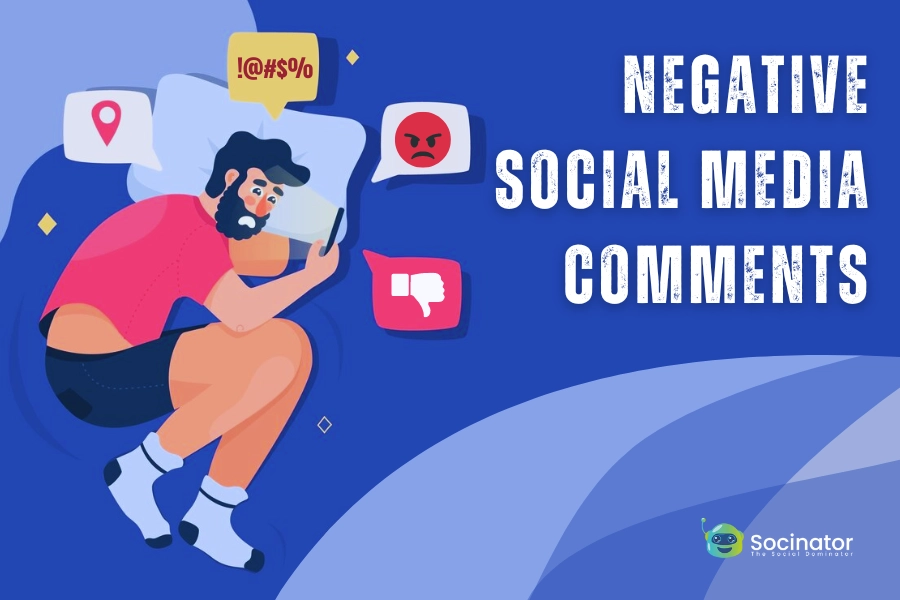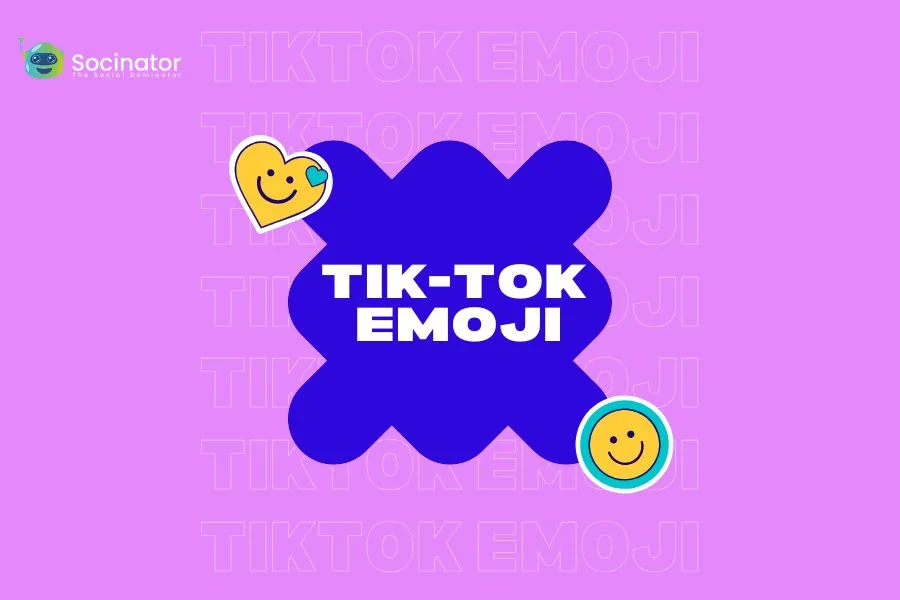Negative comments on social media are nothing new. If your brand has a social media presence, you’ll likely encounter them. As a business, you must also face some negative social media comments frequently.
So, what’s the best way to handle negative comments in a manner that protects your brand and prevents them from resurfacing whenever someone searches for your company?
The answer varies, among the chatter negative comments can emerge like weeds in a garden, threatening to overshadow your brand’s reputation.
However, responding to these comments isn’t just about damage control; it’s a strategic opportunity to showcase your brand’s values and commitment to customer satisfaction.
In this blog, we’ll explore why responding to negative social media comments is paramount and offer practical strategies on how to effectively navigate this challenging terrain. Here we will also give you a short brief about Facebook, Twitter, Pinterest and Instagram auto comment tools.
So, Let’s dive in!
In A Hurry? Listen To The Blog Instead!
What Makes the Audience Leave Negative Comments Online?
Audiences leave negative comments online for a variety of reasons, often driven by their experiences, emotions, or perceptions. Understanding the underlying factors can help brands effectively address and mitigate negative feedback.
Here are some common reasons why audiences leave negative social media comments:
1. Dissatisfaction with Product or Service:
Customers often leave negative social media comments when they are dissatisfied with the quality, functionality, or performance of a product or service. Issues like product defects, poor customer service experiences, or unmet expectations can prompt negative feedback.
2. Poor Customer Service:
Negative comments frequently stem from negative experiences with customer service, including slow response times, unhelpful support representatives, or perceived indifference to customer concerns. Customers expect prompt and effective resolution of their issues.
3. Miscommunication or Misunderstandings:
Miscommunication or misunderstandings between the brand and the customer can lead to negative social media comments. This might involve unclear product descriptions, misleading advertising, or misinterpreted brand messaging.
4. Unresolved Issues or Complaints:
Customers may feel compelled to leave negative social media comments if they believe their concerns or complaints have been ignored or inadequately addressed by the brand. It is important to resolve issues satisfactorily to avoid escalating negative sentiment.
5. Emotional Responses:
Negative comments often result from emotional responses such as anger, disappointment, or frustration. Customers may express their emotions online without fully considering the impact of their comments on the brand’s reputation.
Understanding these reasons can help brands effectively address negative feedback, improve customer experiences, and mitigate the impact of unfavorable social media comments on their brand reputation and relationships with their audience.
6 Reasons For Replying To Negative Social Media Comments
Responding to negative social media comments isn’t just about damage control; it’s an opportunity to showcase your brand’s values and commitment to customer satisfaction.
Here’s why it matters:
Maintain Reputation:
Social media is a public platform where your brand’s reputation can be shaped by how you interact with your audience. Ignoring negative social media comments can create the impression that you don’t care about your customers’ concerns or feedback.
Build Trust and Transparency:
When you respond to negative comments honestly and transparently, it shows that you care about your customers. This can help build trust with your audience, showing that you are willing to acknowledge and address issues head-on.
Turn Critics Into Advocates:
When you respond constructively to negative social media comments, you have the opportunity to turn disgruntled customers into loyal advocates. By addressing their concerns and offering solutions, you can show that you value their feedback and are committed to improving their experience.
Prevent Escalation:
Ignoring negative social media comments can sometimes lead to escalation, as frustrated customers may continue to voice their complaints or share their negative experiences with others. Responding promptly and professionally can help defuse tension and prevent further negative publicity.
Opportunity For Improvement:
While sometimes difficult to hear, negative feedback can provide valuable insights into areas where your business may need improvement. By listening to customer concerns and taking action to address them, you can continuously refine your products, services, and customer experience.
Maintain Engagement:
Even if the results aren’t great, engaging with your audience shows that you’re paying attention and engaging in discussions about your brand. This can help maintain engagement levels and keep your audience connected to your brand over time.
In the world of social media, how you respond to negative comments can make or break your brand’s reputation. By embracing feedback, addressing concerns, and striving for continuous improvement, you can turn negative experiences into positive outcomes. Responding with empathy, transparency, and a commitment to customer satisfaction builds trust, loyalty, and long-term success.
Read More:
How To Respond To Positive Comments On Social Media And Measure Its Impact?
Instagram Auto Comment: Hit The User Engagement Psychology
Increase Engagement In 10 Steps With Auto Comments Instagram
How To Respond To Negative Social Media Comments As A Brand?
Handling negative social media comments as a brand requires a thoughtful and strategic approach to protect your reputation and maintain positive relationships with your audience.
Here’s a comprehensive guide on how to effectively handle negative social media comments:
1. Don’t Ignore Negative Comments:
Ignoring negative comments can escalate the situation and reflect poorly on your brand. Receiving all comments, regardless of whether they are positive or negative, is a great way to show that you care about customer feedback. Receiving negative comments shows that you are committed to hearing out your customers and making their experience better.
2. Apologize Sincerely:
If a customer has had a negative experience, offer a sincere apology. Acknowledge their concerns and express genuine empathy for any inconvenience or dissatisfaction they may have experienced. A heartfelt apology is an expression of humility and a way of showing that you are truly sorry for any issues that may arise with your product or service.
3. Don’t Make False Promises:
Avoid making promises you can’t keep when responding to negative comments. Be honest about what you can do to address the issue and follow through on your commitments to rebuild trust with the customer. Transparency is key to maintaining credibility and integrity in your interactions with customers.
4. Be Polite:
Maintain a professional and respectful tone in your responses, even if the comment is aggressive or unfair. Responding with politeness and courtesy demonstrates your commitment to excellent customer service and diffuses potentially tense situations. By remaining calm and composed, you can help reduce tensions and encourage better communication.
5. Take it Out of the Spotlight:
Whenever possible, move the conversation out of the public eye. Encourage the customer to direct message or email you to discuss their concerns further and resolve the issue privately. Handling complaints privately allows you to address the customer’s needs more effectively without drawing unnecessary attention to negative experiences.
6. Personalize Your Message:
Tailor your responses to each customer and their specific concerns. Personalization shows that you’re listening attentively and genuinely care about addressing their needs. Use the customer’s name and reference specific details from their complaint to demonstrate that you’ve taken the time to understand their perspective and are committed to finding a resolution.
7. Reply Instantly:
Respond to negative social media comments promptly to demonstrate that you take customer feedback seriously. Timely responses can help prevent further escalation and demonstrate your commitment to resolving issues quickly. Monitoring social media channels regularly allows you to address concerns in real time and minimize the impact of negative feedback on your brand’s reputation. You can also use a social media automation tool to reply to the audience instantly. Brands can easily try Facebook, Pinterest, Twitter and Instagram auto comment feature to increase their engagement.
8. Explain Yourself:
Provide clarity and context in your responses, especially if the negative comment stems from a misunderstanding or misinformation. Explain your side of the story respectfully and transparently. By providing additional information or context, you can help customers better understand the situation and alleviate any concerns they may have.
9. Learn From Your Mistakes:
View negative feedback as an opportunity for growth and improvement. Get to the bottom of the problem and take action to avoid similar issues in the future. Solicit feedback from customers and internal stakeholders to identify areas for improvement and implement changes that enhance the overall customer experience.
10. Generate Positive Comments:
Encourage satisfied customers to share their positive experiences on social media. Foster a community of brand advocates who can counterbalance negative comments and provide authentic testimonials of your products or services. Engage with customers proactively and cultivate positive relationships that drive word-of-mouth recommendations and strengthen brand loyalty.
One of the most important things you can do when dealing with negative social media comments is to be proactive. Manual comment moderation can be time-consuming and may not always guarantee timely responses. That’s where social media automation tools can come in handy. By automating replies to common types of negative comments, you can ensure a swift acknowledgement of customer concerns while freeing up your team’s time for more complex issues.
Automation doesn’t mean a lack of authenticity. It’s about streamlining processes to ensure every customer feels heard and valued. Through carefully crafted response templates and customization options, automation tools can maintain a personal touch while addressing common grievances efficiently.
Socinator: A Social Media Management Tool
Socinator is a social media management and automation tool designed to help individuals and businesses manage their presence and activities across various social media platforms. The platform provides a range of features intended to streamline social media marketing efforts, enhance engagement, and increase efficiency in managing multiple accounts.
One such tool that exemplifies this balance between efficiency and authenticity is Socinator.
Automated Engagement:
With Socinator’s auto comments feature, users can automate the process of leaving comments on posts across different social media platforms such as Facebook, Instagram, Twitter, LinkedIn, and more. This helps in maintaining consistent engagement with followers without requiring constant manual intervention.
Customizable Commenting Strategies:
Socinator allows users to customize their commenting strategies based on their specific goals and preferences. Users can create predefined sets of comments tailored to different types of posts, ensuring that their interactions with followers are relevant and meaningful.
Targeted Commenting:
Users can specify targeting criteria to ensure that their comments are directed towards specific posts, users, or hashtags. This targeting functionality helps in reaching the intended audience and increases the visibility of the user’s profile or brand.
Personalization Options:
Socinator provides options for personalizing comments to make them more authentic and engaging. Users can incorporate variables such as the user’s name, post content, or relevant keywords to add a personalized touch to their comments.
Scheduling & Timing:
Users can schedule automated comments to be posted at optimal times when their target audience is most active on social media. This ensures maximum visibility and engagement for their comments.
Monitoring & Analytics:
Socinator offers monitoring and analytics tools that allow users to track the performance of their automated comments. Users can analyze metrics such as engagement rates, response rates, and audience sentiment to refine their commenting strategies and improve overall engagement.
Compliance & Safety:
Socinator prioritizes compliance with social media platform policies and guidelines to ensure that users’ automated commenting activities adhere to best practices and do not violate any terms of service.
Overall, Socinator’s Auto Comment feature empowers users to enhance their social media presence, increase engagement with their audience, and save time by automating repetitive commenting tasks.
Conclusion
Actively engaging with negative social media comments is essential for brand integrity and customer satisfaction. By addressing criticisms promptly and empathetically, brands can turn negative experiences into positive outcomes, fostering trust and loyalty.
Embrace negative feedback as a chance for growth and improvement, showcasing your brand’s commitment to excellence. Through genuine interactions, brands can strengthen their reputation and credibility, ultimately building stronger relationships with their audience.
If you master the strategy of replying to negative once, responding to positive comments on social media will be a breeze. So, don’t shy away from addressing negativity; instead, view it as an opportunity to showcase your brand’s values.










